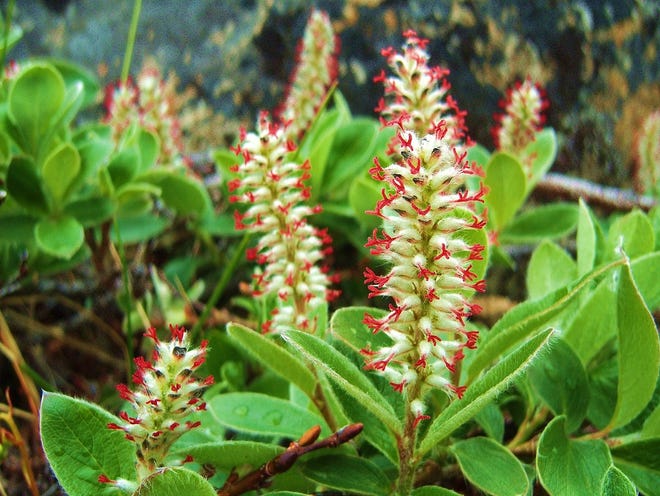

As long as there has been the legend of Santa Claus, there has been curiosity about what he does in the off-season. We all see pictures of Santa at the beach, but I would like to think and hope that Santa is a gardener. After all, the garden season should fall opposite of his busy season of Christmas.
Here in southwest Ohio, we certainly have gardening challenges related to weather, but ours are nothing like Santa’s. At the North Pole, the average temperature in the winter is 30 degrees below zero, and the winter is nine months long, with three months of summer. Spring and fall only last a few weeks. The summer temperatures can average in a range of 37 to 54 degrees. This is warmer than I thought.
There are more than 1,700 plant species growing in the artic. Yes, this number may seem very high, but included in this number are lichens and mosses, which are considered plants. They grow mostly on the underside of rocks.
Also growing up there are shrubs, grasses and forbs. Amongst these, there are only 60 species of flowering plants growing at the North Pole. Arctic plants grow very low so they can be protected by the snow during the long winter months. This is why there are no trees. All of the plants have small leaves to keep them from losing moisture in the winter months, and they all require minimal light to grow.
The only plant variety we can relate to growing in the Arctic is the Salix arctica – Arctic Willow. This plant is in the same family as the willow trees and shrubs growing in our landscapes. The Arctic Willow only grows 1 to 5 inches tall and is a food source for Arctic animals like caribou, musk oxen, and hares.
These animals would also be the source of meat needed to feed the elves and their families. They need a balanced diet, so what about vegetables? Vegetables are grown in the North Pole and other Artic regions in greenhouses. Growing vegetables in greenhouses in these regions is interesting because in the winter they go months without sun. Conversely, in the summer there are months when the sun never sets.
In these months, the extra light is an extreme benefit, as it allows vegetables to grow to much larger sizes. Many of these vegetables reach record sizes. In the greenhouses, they grow varieties of greens, squash, tomatoes, and potatoes. They can even grow flowers in the greenhouses for Santa to give to Mrs. Claus.
What I have learned is that Santa does garden. It seems like during the dark winter months the elves fulfill their duties making all of the toys for the good boys and girls throughout the world. Then when the sun shines nonstop during the summer months, there is a crew of elves, led by Santa, who transition to the greenhouse to grow the vegetables to feed everyone in Santa’s Village.
In case you are wondering what Santa likes to do most in the garden, he likes to hoe, hoe, hoe.
Source link









